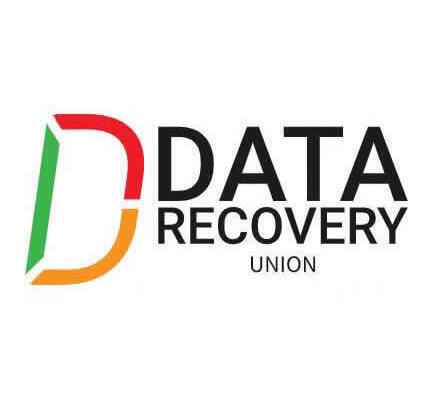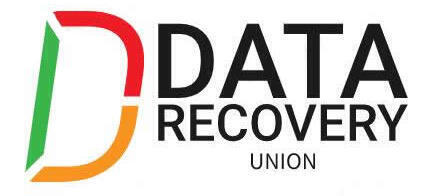The Causes & Solutions of Two Main types of Noise which is occurred in WD HDDs (Especially Related To L-shape PCBs).Continuous Noise & Clicking Noise
1- The Continuous Noise
Sometimes there is a continuous noise come from WD HDDs mainly with L-shape PCBs
with motor ICs (Smooth 1.3) , (L6278 1.7) & (L6278 1.2).
the noise is like : Trrrrrrrrrrrrrr or Trrrr….Trrrr…Trrrrr
so all we have to do for fixing this problem is:
1- clean the connection points which connect the head stack pins with the PCB using a pencil Rubber …carefully.
2- clean the motor IC pins thoroughly using a solvent & Toothbrush then wipe it with a piece of smooth handkerchief to remove the dust & dirt from it.
-Note- the two steps mentioned above solve the problem in few cases.
3- If the two steps mentioned above didn’t fix the problem , you have to replace the motor IC cause it’s damaged.
2-The Clicking Noise
when u power on the hard drive u will hear a noise like (click,click….click,click…click,click)
this noise may be related to the head stack or PCB, the first thing you have to do is to check the PCB By The following steps:
1- first u have to clean the Whole PCB With a Solvent & Toothbrush then wipe it with a piece of smooth handkerchief to remove the dust & dirt from it.
Caution: Cleaning of the PCB must be done carefully to avoid removal of any small electronic components.
2- Check the Resistor (R120) , [ the right value of this Resistor is (0.12 Ohm) ] ,you may adjust your multimeter to Resistor Measuring Mode to Determine its Value ,if it’s Damaged u have to replace it. but before that, u have to check Transistor Q3 , it’s a 6 pins transistor , for measuring this transistor u may adjust your multimeter to Diode Mode,[ the right Value will be: (first two pins = 0.000 , second two pins =0.000 , Third two pins = nearly over 600)]
if Q3 is Damaged it will burn ur R120 after u replace it , so be sure that Q3 is ok before replacing R120 & u may also Check Transistor Q6 by the previous method to be completely sure it’s safe to replace R120.
Note: ( to be sure of The right values of these electronic components u may compare the values u have measured with the values of a working PCB’s Components)
3- Check The Coils (such as L2 & L7) – adjust your multimeter to diode mode then the right value must be ( 0.000 ) for any coil as u all know.
4- Inspect the whole PCB for any removed component ( such as small capacitors or Resistors ) … the removal of these small components may occurred while forced cleaning of the PCB …. so be careful while cleaning it.
5- In rare cases the firmware microchip may be damaged.
——————————————————————————————
-Note- in case of Motor ICs (L6278 1.7) & (L6278 1.2) first try to desolder them then resolder them again before u decide to replace them with a new ones … this sometimes work , but if it didn’t work … replace them directly.
– in case of Motor IC (Smooth 1.3) you must replace it directly.
The image below shows you where to clean.



 The SD memory cards known as the “Secure Digital” first began as miniature cards. Afterwards the new and advanced form of the SD memory card SDIO “Secure Digital Input/output” was introduced into the market. The SDA “Secure Digital Association” included new features and technology to the SD memory cards. The SDA included new varieties of card functions. These new card functions included wireless “Local Area Network LAN” devices, cell phones, GPS receiver, digital video camera etc. The memory card readers that were used in the Secure Digital devices connected to the Universal Serial Bus (USB). The Windows Operating System detects and manages the SD (Secure Digital) memory cards through the driver called the (USB) Universal Serial Bus mass storage. The (SD) Secure Digital host controllers are supported by the Operating System. The Operating System connects the host controller SD to the Peripheral Component Interconnect (PCI) bus. When the SD-host controller is detected by the operating system, the “SD Secure Digital bus driver” is loaded by the operating system OS. When the SD card is inserted by the user, the windows Operating system loads two drivers the “Storage mini-port” and the “SD Secure Digital Storage Class”. These two drivers are loaded on top of “Bus driver” by the Windows Operating System. On the other hand if the SD memory card of a different function like the wireless Local Area Network (LAN) or the Global Positioning System is inserted by the user, then the Windows Operating System loads the driver that is supplied by the vendor. It is necessary that both the vendor supplied and the native drivers in the (SD) Secure Digital stack communicate with “Secure Digital Bus”. The device drivers call the routines to communication with the “Secure Digital Bus”. These routines are called in the static “Secure Digital Bus library”. When the SD Secure Digital drivers compile, it is necessary that they link to the “Secure Digital SD Bus library”. There are some limitations for the SD device drivers. The “Host Controller Register” is not directly accessible by the Secure Digital device drivers.
The SD memory cards known as the “Secure Digital” first began as miniature cards. Afterwards the new and advanced form of the SD memory card SDIO “Secure Digital Input/output” was introduced into the market. The SDA “Secure Digital Association” included new features and technology to the SD memory cards. The SDA included new varieties of card functions. These new card functions included wireless “Local Area Network LAN” devices, cell phones, GPS receiver, digital video camera etc. The memory card readers that were used in the Secure Digital devices connected to the Universal Serial Bus (USB). The Windows Operating System detects and manages the SD (Secure Digital) memory cards through the driver called the (USB) Universal Serial Bus mass storage. The (SD) Secure Digital host controllers are supported by the Operating System. The Operating System connects the host controller SD to the Peripheral Component Interconnect (PCI) bus. When the SD-host controller is detected by the operating system, the “SD Secure Digital bus driver” is loaded by the operating system OS. When the SD card is inserted by the user, the windows Operating system loads two drivers the “Storage mini-port” and the “SD Secure Digital Storage Class”. These two drivers are loaded on top of “Bus driver” by the Windows Operating System. On the other hand if the SD memory card of a different function like the wireless Local Area Network (LAN) or the Global Positioning System is inserted by the user, then the Windows Operating System loads the driver that is supplied by the vendor. It is necessary that both the vendor supplied and the native drivers in the (SD) Secure Digital stack communicate with “Secure Digital Bus”. The device drivers call the routines to communication with the “Secure Digital Bus”. These routines are called in the static “Secure Digital Bus library”. When the SD Secure Digital drivers compile, it is necessary that they link to the “Secure Digital SD Bus library”. There are some limitations for the SD device drivers. The “Host Controller Register” is not directly accessible by the Secure Digital device drivers.
